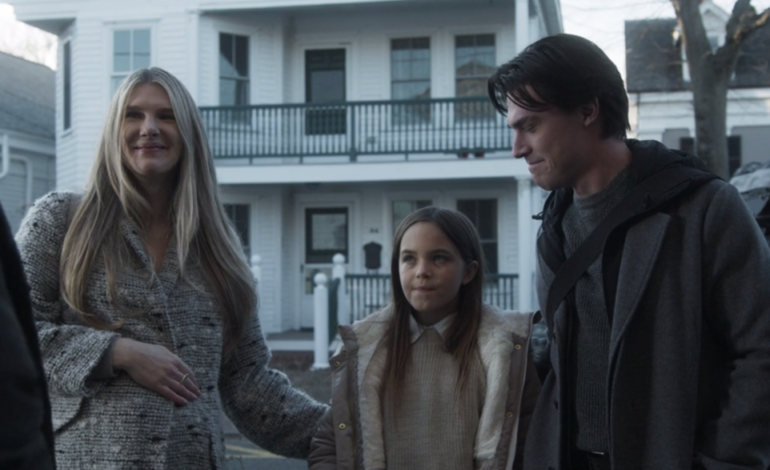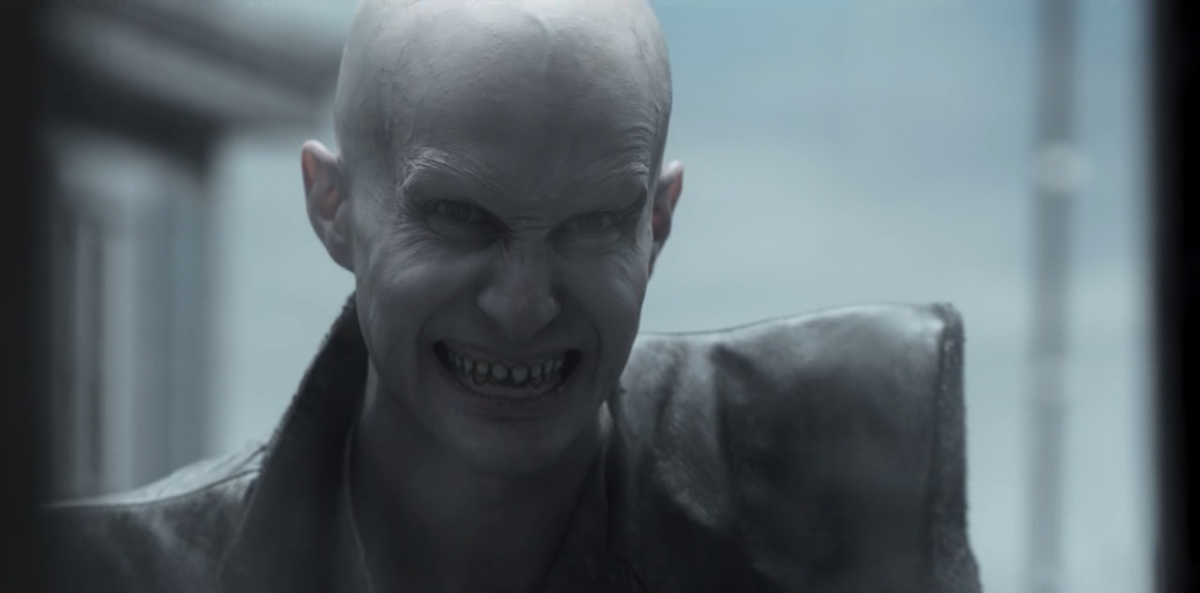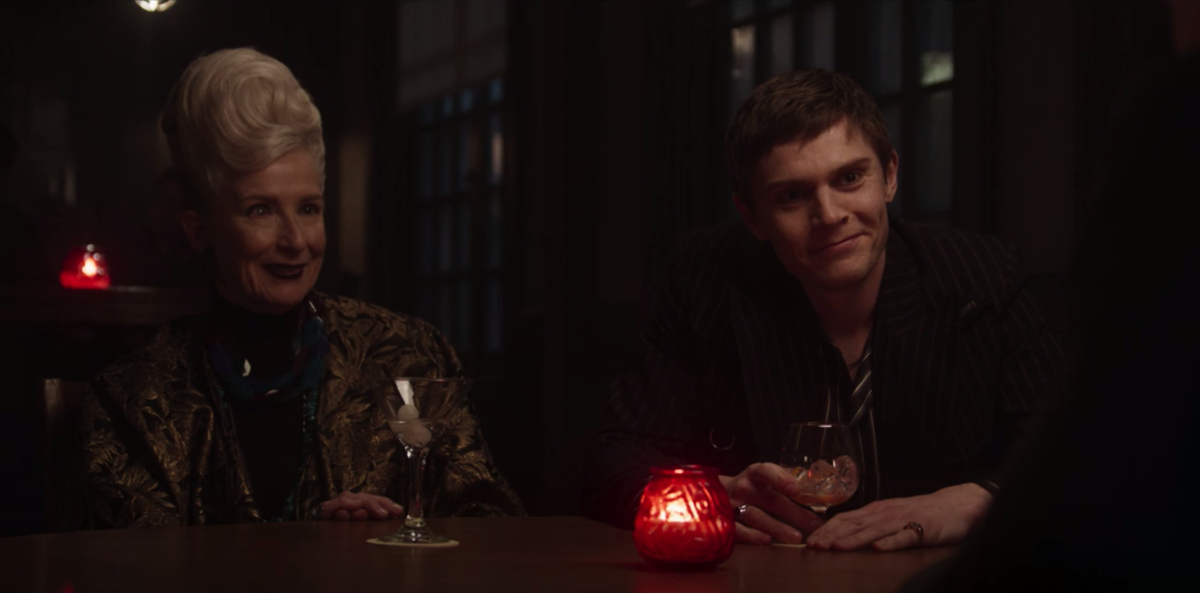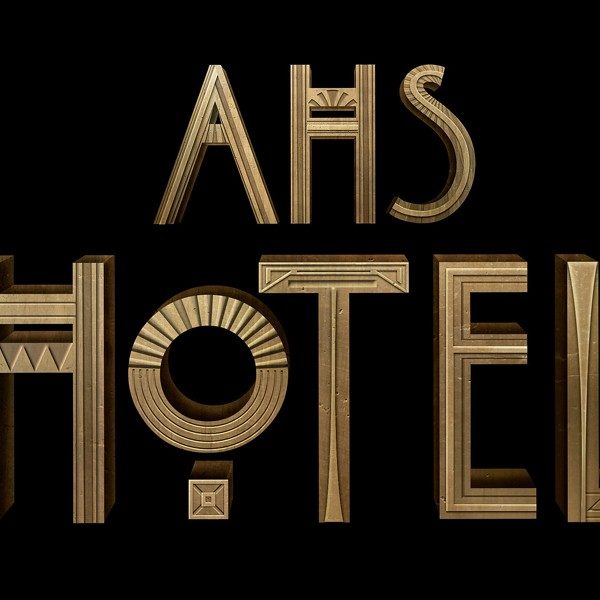

American Horror Story’s premiere begins the first half of its titular double feature with Red Tide, which is set in present-day Cape Cod and follows the Gardener family on their three-month vacation to Provincetown to help patriarch screenwriter Harry (Finn Wittrock, Ratched) break his writer’s block. Accompanied by daughter Alma (Ryan Kiera Armstrong, Anne with an E), and pregnant wife Doris (Lily Rabe, The First Lady), the trio find themselves faced with the strange town and its even stranger residents.
This season has set itself up to be far different from other seasons, both in set-up and, when compared to more recent seasons such as 1984, overall themes and tone. As a serialized network show, it has faced the difficulties of balancing quality and quantity, forced to draw out their narratives to fit the network’s needs. They tried to do something similar with Roanoke, the first part being a television dramatized special and the other set in the real world in a found footage/reality show format, but both parts were connected and followed the same story. With Double Feature, however, they seem to have found a way to capitalize on the rising interest and success of the mini-series that has come with the surge in streaming platforms while still maintaining a network schedule, instead telling two (seemingly) separate stories in one season.
This season has also shifted gears in terms of themes and tone of the more recent seasons. While less campy and humorous than 1984, the homage to the slasher movies of the time, Red Tide still pays homage to the classic vampire movies; it also could be said that inspiration has also been taken from Alfred Hitchcock. While the thematic elements and social commentary aren’t as glaring as Cult, they are still weaved throughout the story and take on various forms to emphasize the points and nuances. Unlike Roanoke, the style of cinematography used is reliant on the narrative itself or the influences used rather than set guidelines from the pre-established styles being utilized, such as found footage and television documentaries.


The most interesting part of this decision to take a more serious approach to this season, reminiscent of the earlier seasons with how dark and far they’re willing to go in terms of content, is how they’re choosing to depict the classic horror movie icon of the vampire which—despite its strong origins with Dracula (1931) and Nosferatu—has been seen, in certain executions and subgeneres, as a caricature of its preceding depictions, and is equal to the werewolf when associated with low budget monster movies; also known as “B-movies,” a term coined from the double features that would be shown in theaters, the B-side being the film less regarded. The most overt vampires of this episode were reminiscent of Nosferatu, and while their performances could have been easily framed as amusing even with the scares—more in line with the tone of 1984—it’s clear the episode drew inspiration from Nosferatu’s intended depiction of the vampire as something to be feared; of course, when they’re out in broad daylight, certain instances fail to hit the mark, but they get close enough, and due to the meaning behind their overt existence, it can be forgiven, especially due to the other vampires of the show, which are hinted at, but not actually shown until the next episode (which was released at the same time on Hulu and therefore can be taken into some consideration).
Moving on from the more technical aspects, this episode as a whole was intriguing and set up the atmosphere of the town well, both through the location and the residents. It also set up the running commentary regarding double standards on drug abuse, as there is a parallel between drug addiction and vampirism that is hinted at towards the end of the episode.
The majority of the episode was spent establishing character and narrative intrigue, though it didn’t waste any time placing the family in immediate danger, though there were more questions than answers when it came to any aspect of the town.
Other than the Count Orlok wannabes, the most noteworthy residents of the town are: sex worker Mickey (Macaulay Culkin, Home Alone), Police Chief Burleson (Adina Porter, The 100), town pariah Tuberculosis “TB” Karen (Sarah Paulson, Ratched), and annual vacationers Belle Noir (Frances Conroy, Joker), a celebrated romance novelist, and Austin Summers (Evan Peters, Mare of Easttown), a Tony award winning playwright, the latter two being the main antagonists of Red Tide, as far as has been established.


This episode did a good job laying the foundation for the rest of the story to unfold, especially with the end being Harry taking the pill due to the desperation to complete the pilot he’s working on. Not only is this a catalyst for the rest of the events, but it also leads right into a key part of the commentary, as the audience is intimately aware of Harry’s justification for taking the pill, which is heavily implied in this episode to be what caused Belle and Austin’s vampirism. The scene between Belle and TB Karen when they exchange an infant baby for crystal meth, Belle makes a comment about how she believes TB Karen to be a “miserable piece of human garbage” to be part of the deal, while she doesn’t hold the same disdain for herself, the double standard of which is most likely going to be a major part of this storyline.
Because this was more foundational, however, it felt like it dragged at certain parts, only picking up speed halfway through. While the cemetery chase scene was perfectly placed at the beginning to catch the viewer off balance, the only other major events were Belle’s feeding and the attack on the house. Everything else was more of the same introductions and mystery, even when Belle and Austin introduced themselves and the black pill.
Overall, this was an interesting premiere to a new season of American Horror Story, and with the particular direction it’s heading, it’ll be interesting to see how this story concludes, especially with its limited run within the season.
Rating: 7.75/10

